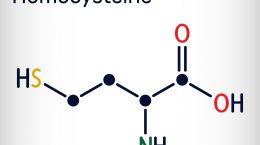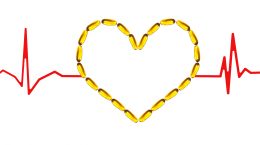Published on July 18, 2024
Studies demonstrate how vitamin D insufficiency can result in higher homocysteine levels and an increased risk of homocysteine related diseases
Key Points
- Homocysteine is a biomarker for over 100 diseases, especially mental and neurological diseases; a higher homocysteine level is associated with an increased risk of cardiovascular disease (CVD) and stroke, osteoporosis, depression, and cognitive decline
- Vitamin D is necessary to help with the expression of the enzymes that metabolize or break down homocysteine; vitamin D deficiency can interfere with the breakdown of homocysteine, contributing to elevated homocysteine levels and increasing the risk of resulting negative health effects
- The following studies demonstrate the relationship between vitamin D, homocysteine, and diseases including cardiovascular and coronary artery disease, liver disease, and type 2 diabetes
 Do you want to lower your homocysteine level? Make sure you are getting enough vitamin D!
Do you want to lower your homocysteine level? Make sure you are getting enough vitamin D!
Homocysteine is a biomarker for over 100 diseases, especially mental and neurological diseases. A higher homocysteine level is associated with an increased risk of cardiovascular disease (CVD) and stroke, osteoporosis, depression, and cognitive decline. In fact, lowering homocysteine has been shown to reduce brain shrinkage by up to 73% in those with adequate levels of the omega-3 fatty-acid DHA. In addition, higher homocysteine has specifically been associated with pro-oxidation and pro-thrombatic status related to endothelial dysfunction and a higher risk of stroke, CVD events and the progression of coronary artery disease (CAD).
The homocysteine level is used as a measure of methylation, or your need for B vitamins. Faulty methylation damages the brain and circulation and can be considered the single best indicator of cognitive health. Homocysteine goes up when methylation is impaired, indicating a greater need for B vitamins, especially vitamins B6, B12 and folate. Increased homocysteine levels can also be due to poor absorption of vitamin B12.
Interestingly, supplementing with folates and B vitamins alone has not demonstrated benefit for lowering homocysteine levels and CVD risk, indicating the need for other factors – such as vitamin D.
The Relationship between Vitamin D, Homocysteine (Hcy), and Cardiovascular Disease
The availability of vitamin D is necessary to help with the expression of the enzymes that metabolize or break down homocysteine. Several studies have therefore suggested that vitamin D deficiency can interfere with the breakdown of homocysteine, contributing to elevated homocysteine levels and potential negative health effects. These studies have demonstrated a significant inverse association between vitamin D level and homocysteine concentration.
To further explore the above mentioned relationship, Verdoia et al. looked at the interactions between vitamin D, homocysteine, and coronary artery disease (CAD). Their study enrolled 3150 patients undergoing coronary angiography who were then divided into quartiles according to baseline vitamin D level (below 8.3 ng/ml; 8.3–14.59 ng/ml; 14.6–22.41 ng/ml; 22.42 ng/ml or higher).
Those with lower vitamin D levels had a higher prevalence of CAD, were older, more often female, had a higher BMI, and had higher rates of diabetes mellitus, renal failure, and history of heart attack. Lower levels of vitamin D were also associated with higher CVD risk and higher prevalence of CAD.
The study also found a significant, inverse linear relationship between lower vitamin D levels and higher homocysteine levels. Interestingly, the association between homocysteine and CAD was only significant among patients with lower vitamin D levels.
According to the study authors,
“…the association of Hcy with the extent of CAD was significant only among patients with hypovitaminosis D, and not in the cohort of subjects with vitamin D levels above the median, suggesting that a normal vitamin D status can prevent the deleterious effects of hyperhomocysteinemia on coronary atherosclerosis…“
Vitamin D, Homocysteine, and Liver Disease
 Previous studies have also seen an inverse association between vitamin D levels and the incidence of liver disease with increased liver enzymes, as well as a correlation between homocysteine and chronic liver diseases associated with elevated levels of ALT and liver enzymes.
Previous studies have also seen an inverse association between vitamin D levels and the incidence of liver disease with increased liver enzymes, as well as a correlation between homocysteine and chronic liver diseases associated with elevated levels of ALT and liver enzymes.
A randomized, double-blind placebo controlled trial by Al-Bayyari et al. looked at the effect of vitamin D supplementation on homocysteine, C-reactive protein levels (CRP), and liver and kidney function tests. Participants were overweight females of reproductive age presenting with vitamin D deficiency (n=100) who were randomly assigned to receive 50,000 IU (1250 ug) per week of vitamin D for 2 months or placebo.
After the two-month trial, those receiving vitamin D experienced significantly lower levels of homocysteine, CRP, AST, ALT, and eGFR, with no significant changes seen in the placebo group. This study demonstrated the effect of vitamin D supplementation on lowering not just homocysteine, but also CRP (a marker of inflammation) and liver enzymes.
Vitamin D, Homocysteine, and Type 2 Diabetes
Another randomized controlled trial by Imanparast et al. enrolled 92 participants who had been diagnosed with type 2 diabetes (T2D) within the previous 5 years. The study looked at the effect of vitamin D and/or chromium picolinate on homocysteine levels and cardiovascular diseases associated with T2D. Participants were randomly assigned to receive placebo, 50,000 IU of vitamin D3 per week, 500 ug of chromium picolinate per day, or both treatments for 4 months.
The study found that homocysteine levels were significantly lower in each of the intervention groups but not placebo – indicating the importance of not just vitamin D for lowering homocysteine, but other essential compounds as well.
The above 3 studies demonstrate how sufficient vitamin D levels are essential for lowering homocysteine and reaping the health benefits that can result from a lower homocysteine level.
Measure Your Vitamin D Level as Part of the D*action Study
Home Blood Spot Testing for Homocysteine is Now Available
This test is currently offered through Food for the Brain (FFB), another charity and friend of GrassrootsHealth, for a price of $65 (or subscribe and save up to 6%; GrassrootsHealth discounts do not apply to this test). While GrassrootsHealth is considering adding the homocysteine test to our study, we wanted to offer you the opportunity to test through FFB first and give us your feedback.
Buy Your at-home Homocysteine Test from Food for the Brain Here
PLEASE NOTE This test requires a fasted blood sample. It is suggested that you perform the test first thing in the morning after 12 hours of fasting, i.e. no food or drinks. For more information read Food for the Brain’s homocysteine FAQs here. Email [email protected] with any questions you have about the test.
Make Sure You Are Getting Enough Vitamin D, as well as Omega-3s and Magnesium!
 Having and maintaining healthy vitamin D levels and other nutrient levels can help improve your health now and for your future. Choose which additional nutrients to measure, such as your omega-3s and essential minerals including magnesium and zinc, by creating your custom home test kit today. Take steps to improve the status of each of these measurements to benefit your overall health. With measurement you can then determine how much is needed and steps to achieve your goals. You can also track your own intakes, symptoms and results to see what works best for YOU.
Having and maintaining healthy vitamin D levels and other nutrient levels can help improve your health now and for your future. Choose which additional nutrients to measure, such as your omega-3s and essential minerals including magnesium and zinc, by creating your custom home test kit today. Take steps to improve the status of each of these measurements to benefit your overall health. With measurement you can then determine how much is needed and steps to achieve your goals. You can also track your own intakes, symptoms and results to see what works best for YOU.
Enroll in D*action and Test Your Levels Today!





